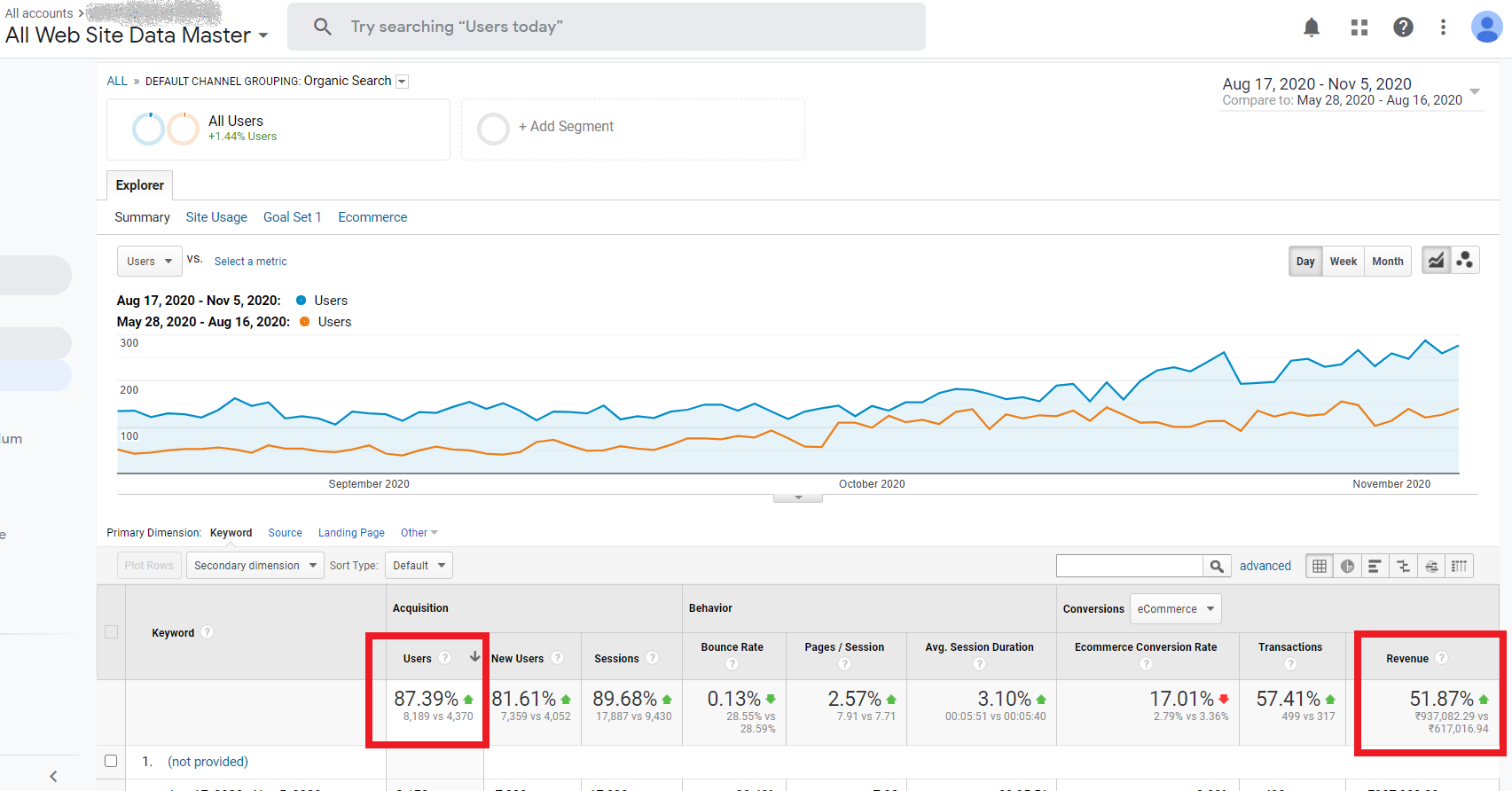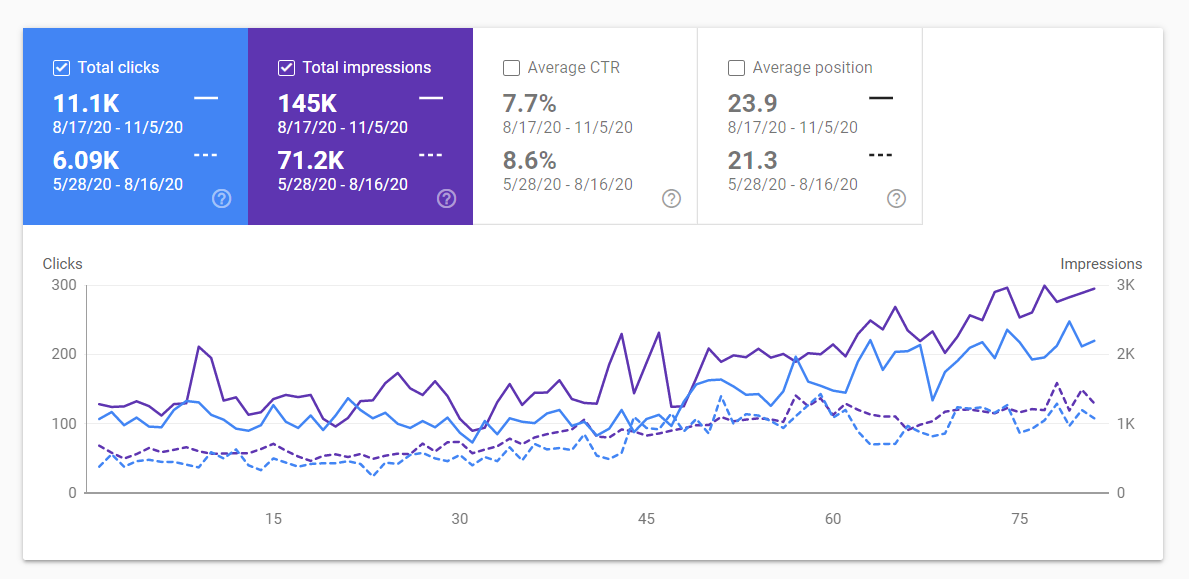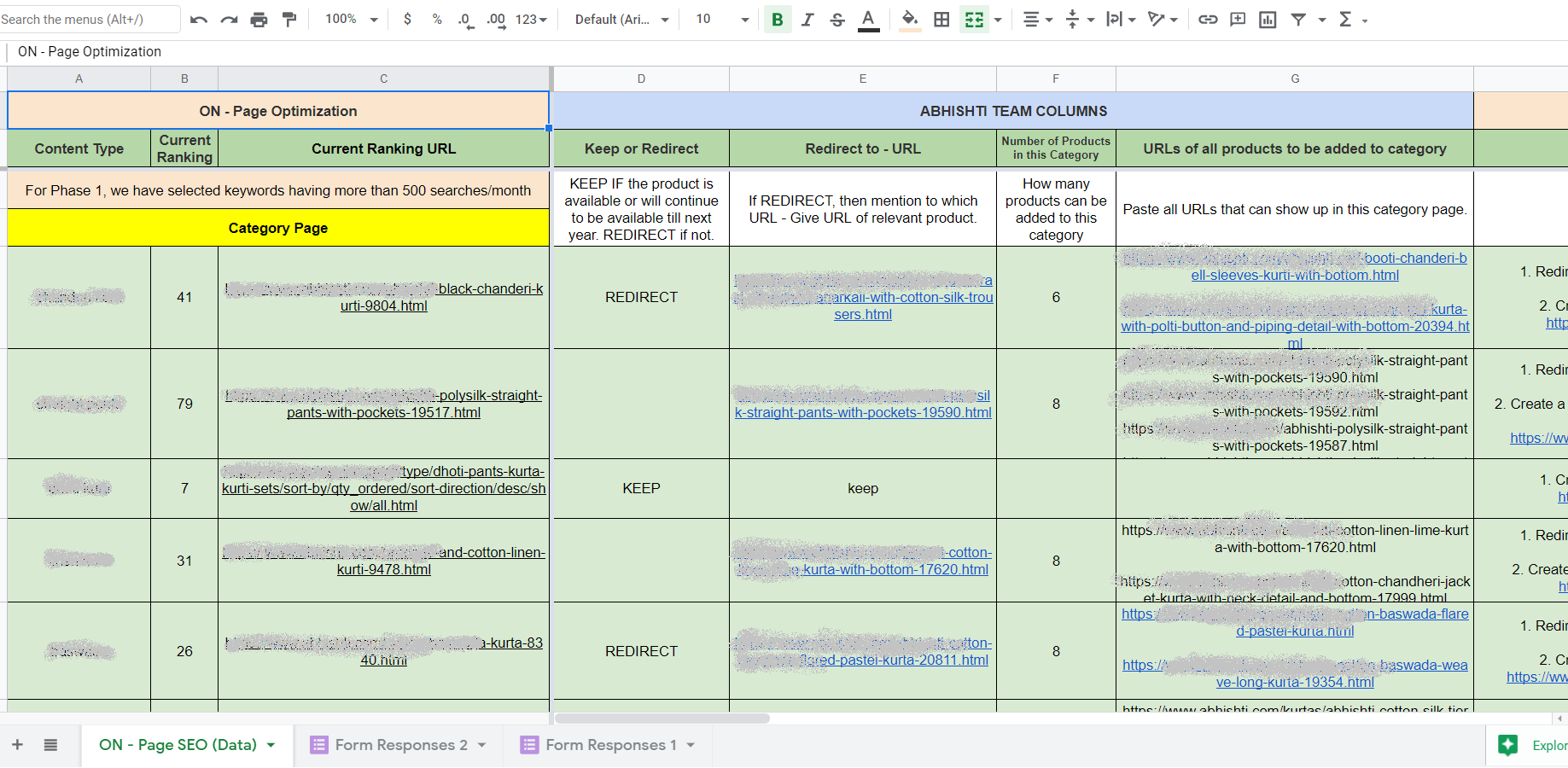For an eCommerce store, most of the sales are driven by paid ads–Google Ads and Facebook Ads–in most cases. I know online stores which practically had their sales stalled after their Facebook Ads account was banned.
Yes, it can happen with anyone!
What do you do in that case?
For a starter, you need more channels. And nothing better if you can make organic traffic work for you. If you can make your website attract traffic from the keywords your customers are searching for, you have a money-making online store with an ever-increasing RoI.
In this blog post, I share one such SEO case study where we helped a fashion eCommerce store increase sales from organic traffic by 51.87% in three months.

Summary of Results for this SEO Case Study
Before I begin, I wanted to give you a summary of all the results of this SEO case study.
Apart from the increase in revenue, other key metrics also saw major improvements. August 17, 2020 has been chosen as the starting day because just a couple of days before that the changes were made live and the pages were sent for reindexing. Here’s a summary of it (for the time period Aug 17 – Nov 5, 2020):
- Number of organic users increased by 87.39% from 4,370 to 8,189 in the observation period
- The number of transactions also jumped by 57.41% from 317 to 499
The numbers are expected to increase even after the observation period as the rankings will stabilize and more pages were updated only in the last week.
Google Search Console also showed improvements in key metrics.

The Approach
First of all, we always, ALWAYS, follow an on-page SEO approach. Even in this project, our strategy revolved around on-page SEO.
The strategy comprised of three major areas of focus.
- Finding high opportunity product category keywords and product category pages
- Finding pages which are ranking already on the first page
- Redoing content, title, and meta description of all these pages
We also offered technical SEO suggestions, which were not been implemented at the time of writing this blog post. So, all the attribution of rank improvement goes to the above three steps.
Now, I will explain you what we did in each and every step.
Step 1: Finding high opportunity product category keywords and product category pages
High opportunity keywords is probably the most used and abused phrase in the world of SEO. In this project, this is what it meant:
All the keywords for which any page on the website was ranking between 11-100 positions. That is, between the second and the tenth page. Similarly, high opportunity product category pages were those which were already ranking between 11-100 positions.
The reason we do this analysis is because it is always easier to rank for those keywords and rank those pages which are already ranking in the first hundred positions.
Pro Tip: During keywords research, identify as many keywords as you can. However, only select the ones for which there are lesser competitors or no page from a prominent brand is ranking for those keywords.
In this particular project, we identified 21 new product category pages that needed to be created.
Step 2: Finding pages which are ranking already on the first page
Again, this step is extremely important. Because for the pages which are already ranking for one or more keywords, it is much easier to make it rank for related keywords.
Usually, a few years back, the strategy some SEO professionals used was to create a page for every target keyword. However, it doesn’t work anymore and in fact, it may hurt for two possible reasons.
- Google’s algorithm may see it as a black hat technique and flag these pages
- Secondly, if you create two pages targeting two similar-looking keywords, both these pages may compete against each other for the same keywords.
For instance, if you created one page for the keyword buy custom printed t-shirts and custom printed t-shirts, chances are both pages may compete against each other for the keyword printed t-shirts, custom printed t-shirts, and buy custom printed t-shirts and more related keywords.
We identified 4 product category pages that were already ranking for over 10 different keywords on the first page.
These pages were also ranking for more keywords but on the second page and beyond. And that again gave us a set of keywords to focus on.
Step 3: Redoing content, title, and meta description of all these pages
So, till now, here’s how it looked:
- We had all the product category pages whose content needed to be redone
- We had now new product category pages that could be created using the current product listings.
- All the product pages whose content can be updated to rank for more keywords

With all the list available with us, we rewrote the content for each of the product category pages. Within two weeks, we had started seeing changes in the content rankings and improvement in the organic traffic.
Conclusion of the SEO Case Study
For an eCommerce, the core to getting organic traffic is product category pages. The number of keywords for which your store can rank for depends on how many product categories pages you can carve out in your eCommerce store. That’s because your actual product pages will always rank for minimal keywords.
In fact, we DO NOT recommend trying to rank your product pages. A user’s intent when searching for a product on Google is usually to go through many options rather than look for a single product.
| Pro Tip: In this particular project, we also tried to redirect people from product pages which were ranking to the relevant product category pages. |
We hope this SEO case study was valuable for you. If you have any questions about the product, feel free to ask in the comments section below.
